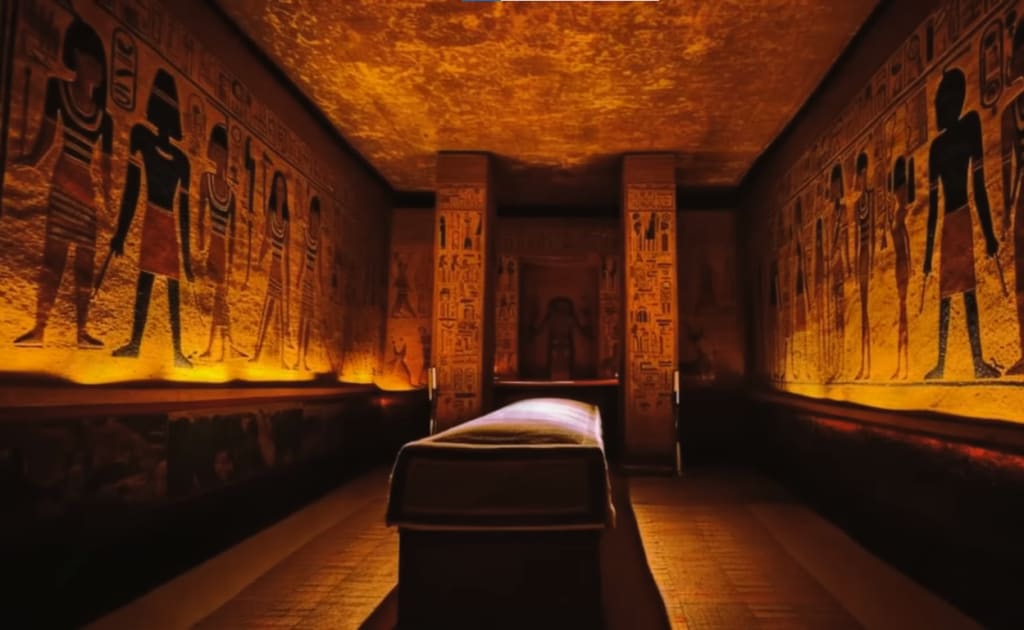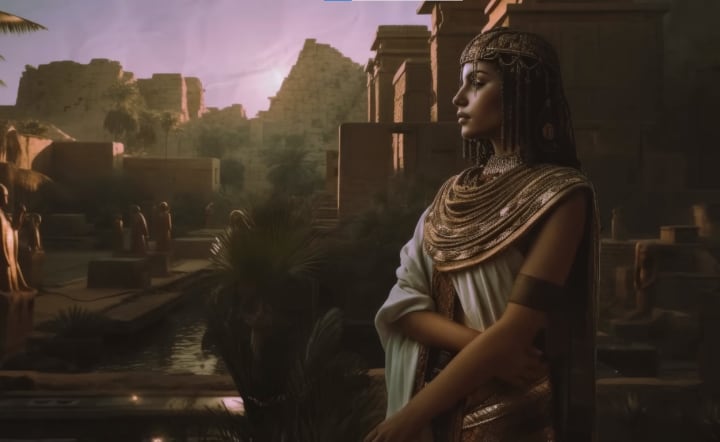Uncovering the Mystery of Cleopatra's Tomb
The Life and Legacy of Cleopatra - Beyond the Mystery of Her Tomb

The northern coast of Egypt hosts a hidden gem - the ancient city of Taposiris Magna. Although today it has very little of its former glory, what lies beneath it may hold the secret to uncovering one of history's greatest mysteries - the location of Cleopatra's tomb.
Recent excavations have uncovered a tunnel, also known as a geometric miracle for its time, that is partially submerged in water. The 43-ft long structure below the ground has a construction technique and shape that are similar to the Eupalinos tunnel, another amazing ancient discovery found in Greece. The Eupalinos tunnel was built by excavating simultaneously from two points, aiming to meet in the middle, using math and geometry with astonishing precision for those days, especially since it was built near a mountain.
Archaeologists have been working on the Taposiris Magna site since 2004, and they believe that this tunnel may lead to the lost tomb of Cleopatra. The clues they have found so far seem to back up this theory. For starters, the city and its temple were built by one of Cleopatra's ancestors, Toy II. Moreover, all the architecture indicates that it was dedicated to the ancient spirit Osiris and his queen, Isis. Throughout her reign, Cleopatra tried to associate herself with Isis, so it may be no surprise that she chose this location as her final resting place.
Scientists have yet to pinpoint Cleopatra's tomb, but research continues with the help of modern technology. Archaeologists have even used a special device called Ground Penetrating Radar, which allows them to analyze what lies beneath the ground without being intrusive. Seeing pictures of what's underground before digging is incredibly useful, and has been done at this site since 2011.
Finally discovering Cleopatra's tomb may help us piece together her story - especially what might have happened during the last portion of her life, which is still surrounded by mystery. We still don't know the exact cause of her passing. Some believe she may have let herself be bitten by a poisonous Egyptian cobra, while others suggest that she was well accustomed to toxic substances, even hiding some in her hairbrush in case she ever needed it. However, that's not to say she chose to use it on herself.

We do have a lot of other interesting information on Cleopatra that's equally impressive. For example, she had a stylist. Most of the images you've seen depicting this famous queen show her wearing black eyeliner. This look was put together by Aias, a woman known to have been her beautician. She traced the long line from her eyes to her temples, a makeup technique still used today to enhance the eyes. Aias was an important figure throughout Cleopatra's life, known also as her confidant and close friend. There are even theories that suggest Aias was thereby Cleopatra's side when she passed away.
Despite her well-thought-out looks, recent research has pointed out that Cleopatra wasn't as pretty as she's described, or at least that's what ancient coins showcasing her image from back in the day suggest. Her looks were rather average, and her image on the coins might have been adjusted to make the queen look stronger in the eyes of her people. So there is no trusted source available to confirm her image, but her description in most pieces of ancient literature speaks of her other qualities, like her voice and personality, not her beauty.
Cleopatra is known as one of the most famous queens in Egyptian history, but she wasn't the first choice for the throne. Her older sister Berenice was next in line, but she died before she could take the throne. So, Cleopatra became queen and focused on educating herself. She frequently traveled around the country to learn more about her people and their needs. At just 18 years old, she became queen and quickly gained popularity for her intelligence and education. Cleopatra had great taste in literature and was a fan of the Greek philosopher and poet Homer. She also enjoyed writing and there are rumors that she wrote a book on medicine and cosmetics, though no evidence of such work has ever been found.
Part of being a great leader back then meant you had to speak multiple languages. Cleopatra clearly understood that, and that's why she's rumored to have known many languages to varying degrees. Some archaeologists suggest she spoke Greek, Egyptian, and Ethiopian, as well as many Arabic dialects. She might have even spoken Latin, but there's little evidence to support this claim.
Cleopatra was really careful with the way she looked, even with her diet. She was known to have enjoyed simple meals, including a variety of fish since she lived close to the Mediterranean Sea.
About the Creator
Enjoyed the story? Support the Creator.
Subscribe for free to receive all their stories in your feed. You could also pledge your support or give them a one-off tip, letting them know you appreciate their work.





Comments (2)
Test is not accepting comments at the moment
Want to show your support? Send them a one-off tip.